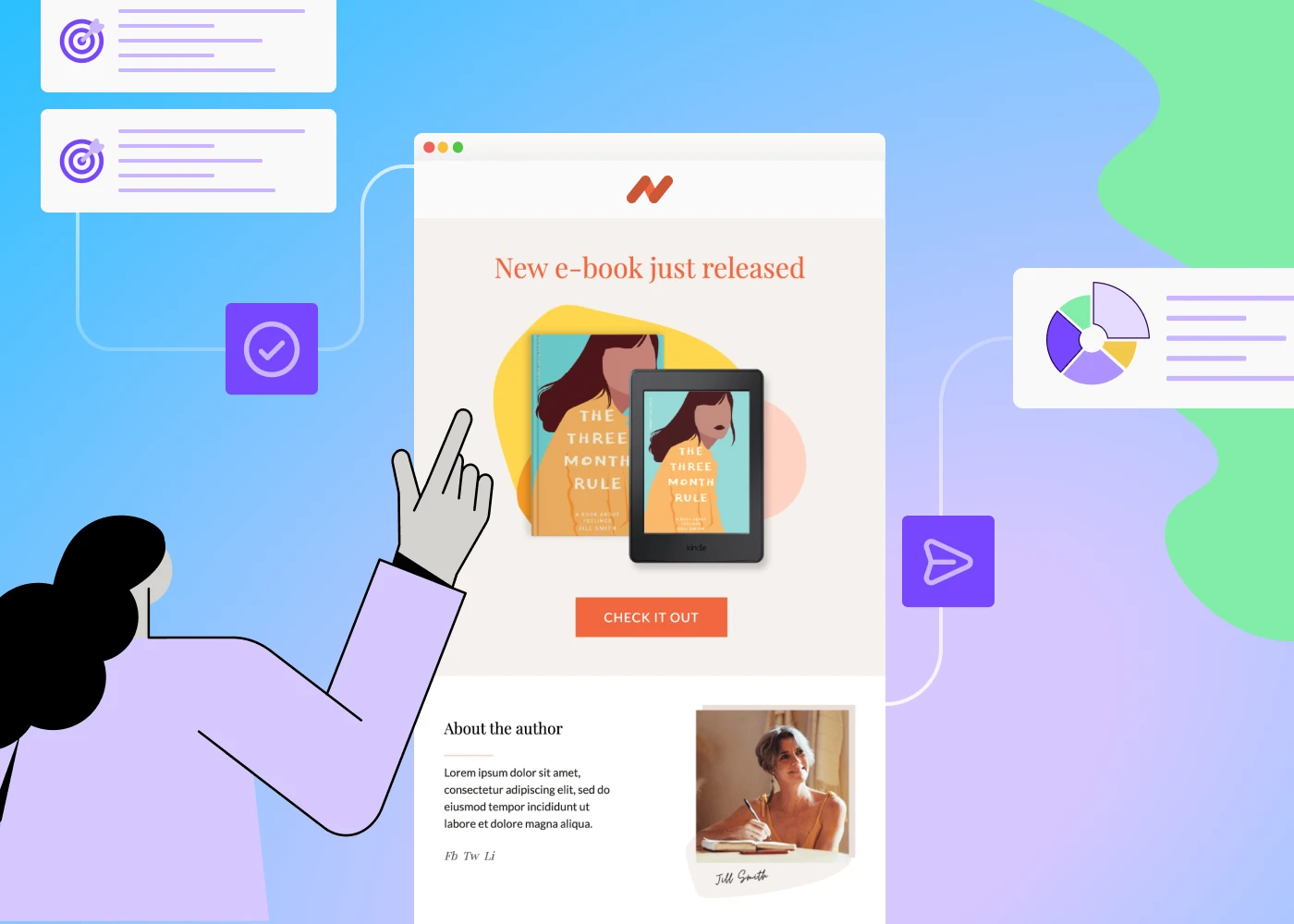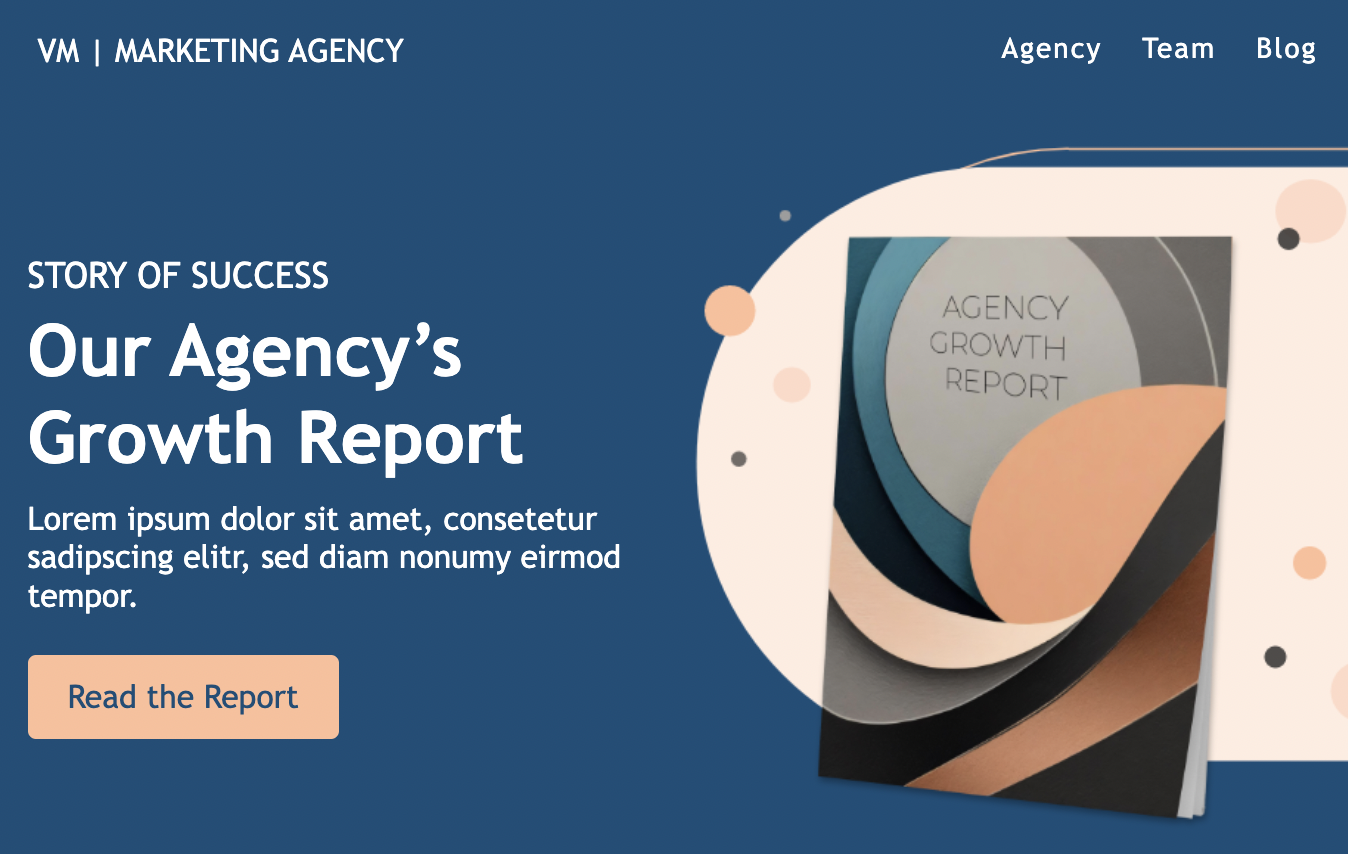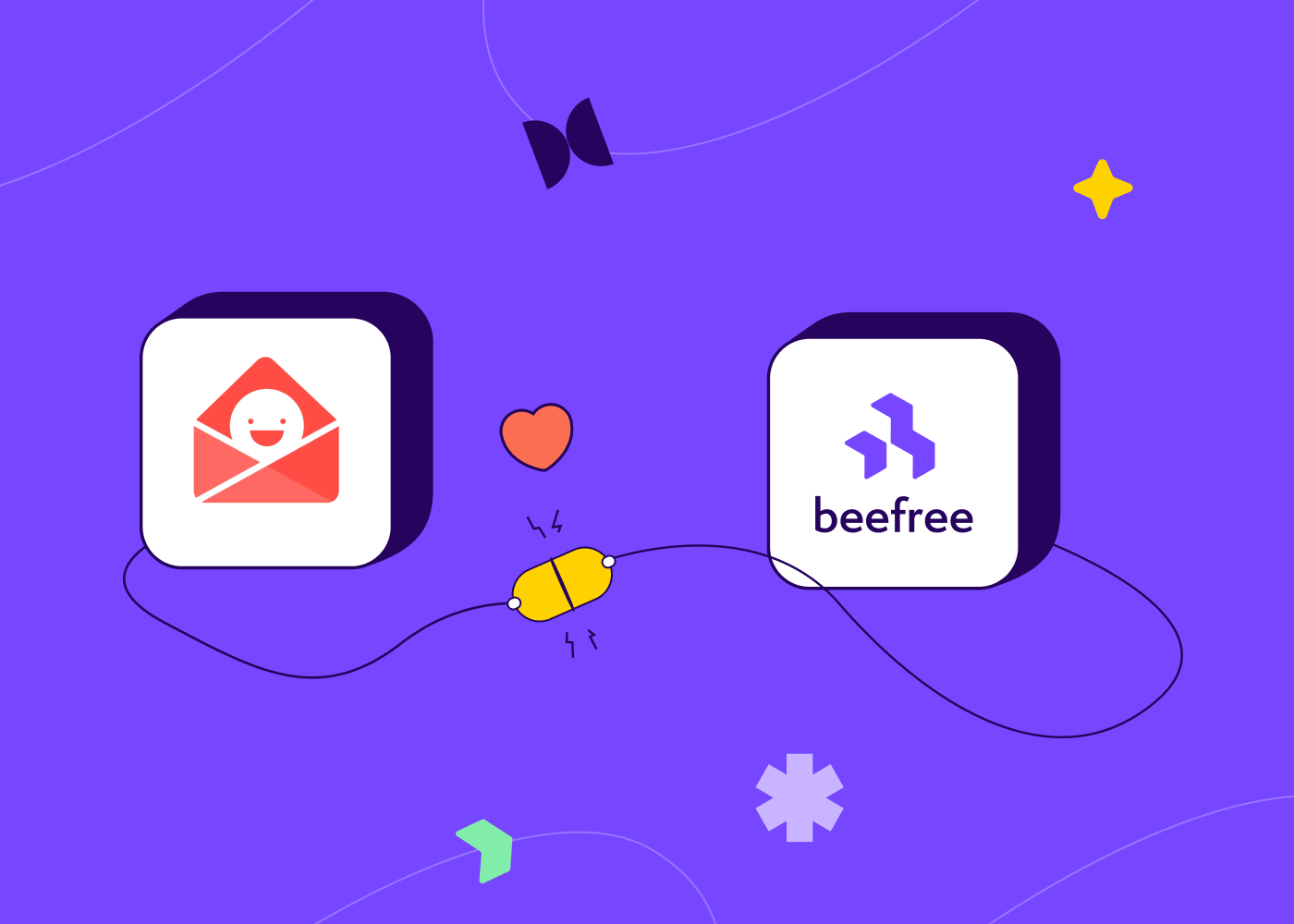There's a lot of misinformation and confusion when it comes to email marketing terms. Many are used in the wrong context and other terms are difficult to understand.This short glossary defines the most important email marketing terms, shares use cases and gives you concrete examples you can adapt to your own needs.
1. Transactional email
Transactional emails (also known as triggered emails) are a type of automated message triggered by events (and in some cases preferences) performed by a recipient. This type of email is independent of a company’s email marketing campaigns (though some triggered emails such as abandoned cart messages, can perform marketing functions) and deliver necessary information such as a receipt.One of the hallmarks of a transactional email is the inherent personalization. It’s sent to a specific person and contains information that would only be important or useful to the recipient.
Use cases
There are many use cases for transactional emails such as:
- Receipts
- Subscription notifications
- Email address confirmation messages
- Event registration confirmations
- Support ticket confirmation notifications
- Password reset
- Verification code in two-factor authentication
Emails that qualify as transactional are varied. Keep in mind that they’re personalized to the recipient and are triggered in response to an action they’ve taken.
Transactional email example

The above email is triggered after someone makes a purchase through Doordash. It gives the recipient important information about their order. Though there are marketing elements like referring to a friend, that’s not the goal of the message.
2. Email marketing automation
Email marketing automation has become popular over the last few years but it’s an email marketing term often confused with other things. It's the process of sending timed or event-triggered emails to subscribers.The definition itself is broad and is open to interpretation. For example, a receipt sent to a new customer as well as a welcome sequence can both be considered email marketing automation.Generally, when you talk about email marketing automation, you’re sending messages that’ll move people further down your funnel, get them to specific landing pages, and encourage the sale.
Use cases
Because the definition of email marketing automation is so broad, the use cases are also broad. Here are a few that’ll give you a better understanding of what email marketing automation is:
- Welcome sequence
- Cart abandonment nurturing sequence
- Course content delivery
- Birthday emails
- Significant event emails (anniversary, Valentine’s day, etc.)
- Event promotion
- Webinar follow-up emails
- Product launch sequences
Email marketing automation example

The above example is taken from one of the automation we use in our business and is a bit complicated. There are many triggers that are dependent on whether someone has taken an action or not which segments them into different lists, tags, and email sequences.If you’re just starting out, a simple email campaign with a few steps may be more manageable. Work your way up to advanced automation over time.
3. SPAM
SPAM is often difficult to pin down. If you’re launching a new product line but one of your past customers isn’t interested, it can be considered SPAM (Note: you should be running regular re-engagement campaigns to prevent this). To another customer, it’s relevant and timely.In general, the CAN-SPAM Act and its counterparts in different countries define SPAM as unsolicited or unwanted commercial emails that have a primary purpose of advertising or promoting a commercial product or service.Emails classified as SPAM can have stiff penalties of over $40,000 for every email found to be in violation. The good news is that it’s not difficult to stay compliant. Build a permission-based email list and you clean it regularly to make sure you're compliant.
4. Email Open Rate
The email open rate is the percentage of the total recipients who opened the email sent out. The email open rate isn't tied to the total number of subscribers on your list. The open rate varies depending on your industry and the level of personalization you use when sending messages to subscribers.If you want to maximize your email open rates, focus on the subject line and relevance of the message. Try A/B test different subject lines so you can increase your open rate over time. Services like Moosend, ActiveCampaign, etc. make this relatively simple. Finally, it’s important to ensure your email delivery is high so you’re not getting lower open rates based on a technicality.
5. Email Click-Through Rate
The email click-through rate is the percentage of email recipients that clicked on a link in your email. This includes your main CTA as well as unsubscribe links and other secondary clickable elements.You calculate it by taking the total number of clicks and dividing it by the total number of emails sent in the campaign and expressing the final number as a percentage.Increase it by creating relevant messages and providing multiple opportunities for people to click on your links. That means you should place the same link in your email at strategic places to increase its visibility.
6. Drip Email Sequence
An email drip sequence, also known as an email drip campaign, is a predefined series of emails. They go out to a targeted group of email subscribers on a time schedule or after specific criteria have been fulfilled. The better the drip sequence the more likely they are to help you achieve your goal order to achieve a specific goal.The email marketing term describes emails that share educational content, marketing material, or even announcements in order to close a sale or achieve something important to you.For example, a website visitor signs up to get a PDF about taking care of orchids. The drip related drip sequence sends an email every two days and focuses on different aspects of orchid care. Towards the end of the drip sequence, the messages focus on selling a detailed course that covers all aspects of orchid care.
Use cases
Drip campaigns are used to promote almost anything which makes them quite versatile. The benefit is that you don’t go directly for the sale but instead focus on instilling buying beliefs and building a relationship. Use them to:
- Welcome subscribers
- Launch products
- Introduce concepts
- Teach complicated lessons or deliver a course
- Sell existing products
Example drip sequences

7. Double Opt-in
A double opt-in is when someone signs up for an email list and they receive a transactional email asking them to confirm their willingness to join the list. If they don’t click the link then they won’t become part of the mailing list.Double opt-ins are used to ensure contacts didn’t sign up accidentally and to comply with regulations such as GDPR. At the same time, you protect yourself from spam signups and increase the quality of your mailing list.
8. Email Newsletter
An email newsletter, as the name implies, is an email sent out to inform your subscribers about news, updates, tips, promotions, etc. related to them or your company. Use email newsletters as one-off self-contained campaigns.Email newsletters are the most common type of email and tend to be sent regularly to subscribers. The frequency you choose should be something you’re able to deliver consistently so your subscribers remain engaged with your brand.Newsletters also vary widely when it comes to design. Some of them are plain text while others follow the latest graphic design trends to create unique experiences. What you choose depends largely on your niche.

9. Email Template
An email template is a predesigned or prewritten email (usually an HTML file) that can be tweaked and reused multiple items to quickly create high-quality email campaigns. One of the major benefits of an email template is saving time. It also creates a consistent style for your brand so when people see your messages in their inbox, they have brand recall.
Use cases
Use email templates wherever emails are used but consider creating different templates for different situations:
- Transactional emails
- Confirmation emails
- Newsletters
- Drip campaigns
Email template example

Take a look at more of the BEE email templates you can use to send beautiful emails.
10. Email list hygiene
Email list hygiene is the process of checking the status of contacts on your list and removing the ones who no longer open or otherwise interact with your messages. These emails may have gone “cold” for a number of reasons but if they remain on your list your open rates will reduce and email deliverability may be impacted.Clean your email list regularly by removing bounced emails or contacts who haven’t opened your emails in months. This ensures that only the people who want to receive your messages will get them.
11. Email bounce rate
Email bounce rate is the percentage of emails sent out that are returned by the mail sender as undeliverable. In essence, the email bounces back to you without getting to the intended recipient. There are two major types of email bounces:
- Hard Bounce. A hard bounce is an email that’s returned undelivered because it wasn’t accepted by the recipient’s mail server. In other words, the email address doesn’t exist, the domain doesn’t exist, or the server has completely blocked delivery.
- Soft Bounce. The recipient’s mail server sends the email back after it has been accepted. Soft bounces usually show the email address is right but something is preventing your message from getting through. Common reasons include the server is down, the inbox is full, or the email you’re sending is too large.
12. Email lead scoring
Lead scoring is a powerful tool that can help you identify your most engaged subscribers and customers. It’s the process of assigning a numerical score to actions your subscribers take and using that to sort and rank them. When done correctly, a higher score translates to higher interest in your products and services and a greater likelihood to purchase when you send well-designed sales emails.Develop a clear understanding of what actions deserve to be scored before you implement this strategy. You should also consider how much weight (or how many points) each action should carry.Someone opening your email won't be weighted as much as someone clicking a link. A link click won’t carry as much weight as someone who replies to an email. After someone has a high enough score, you segment them and interact with them differently going forward.
13. Email list segmentation
Email list segmentation is the process of splitting your subscribers into different groups based on criteria important to you. Use it to increase personalization and ROI from email campaigns. You may already do this if you maintain individual lists for people who signed up for different lead magnets on your website.That’s one of the most basic forms of email segmentation and you can go much further with behavioral segmentation. It takes into consideration the pages they’re visiting on your website, the types of emails they’re opening, and the links they’re clicking on.There are countless ways to segment subscribers but it’s important to only use the factors important to you. For example, if you’re selling computers, segmenting based on gender may be irrelevant. If you’re selling clothes or accessories, gender may be extremely important. When selling software, psychographic segmentation may be more important than demographic segmentation.Think about or find the different groups in your audience and which type of email list segmentation will have the most impact on your revenue.
14. Cart abandonment email sequence
An abandoned cart email is an automated email sent to a recipient after they’ve added items to their cart but didn’t complete the checkout process before leaving the website. They’re an essential aspect of an eCommerce business because the cart abandonment rate is a high as 70%.A simple 3-part cart abandonment email sequence can recover as much as 15% of the revenue that would have otherwise been lost. It’s important to start the process quickly so you engage with subscribers while the purchase they were considering is still top of mind.
Cart abandonment email example

15. Dynamic email content
Dynamic email content is an email marketing term imagery or text that changes based on the characteristics of the recipient. These characteristics are anything that matters to you and helps you achieve your goal.For example, you can send the same email to two subscribers but one is a male and one is female. In the email sent to the female subscriber, the imagery and change to focus on high heel shoes. In the email sent to the male, the imagery and text focus on men’s brogues.Use it with templates or create it from scratch. The limitations of how you can set up dynamic content are set by your email marketing provider. Some of them are like ActiveCampaign, Constant Contact or their alternatives are extremely flexible while others don’t support it at all.
Conclusion
These email marketing terms are essential if you want to make the most of your beautiful templates and your campaigns.The list isn’t exhaustive but it’ll point you in the right direction so you can make the most of every email you send.







